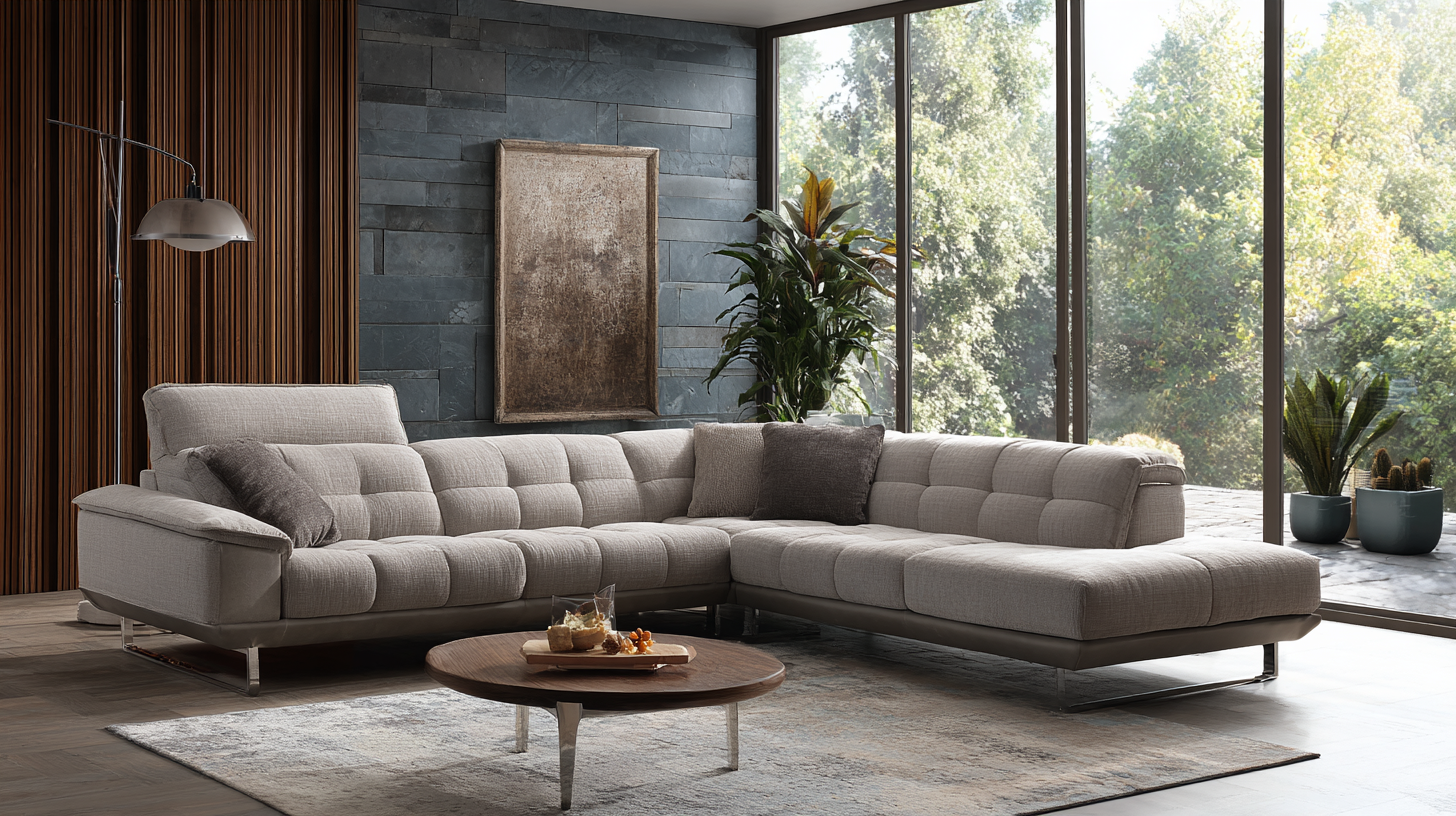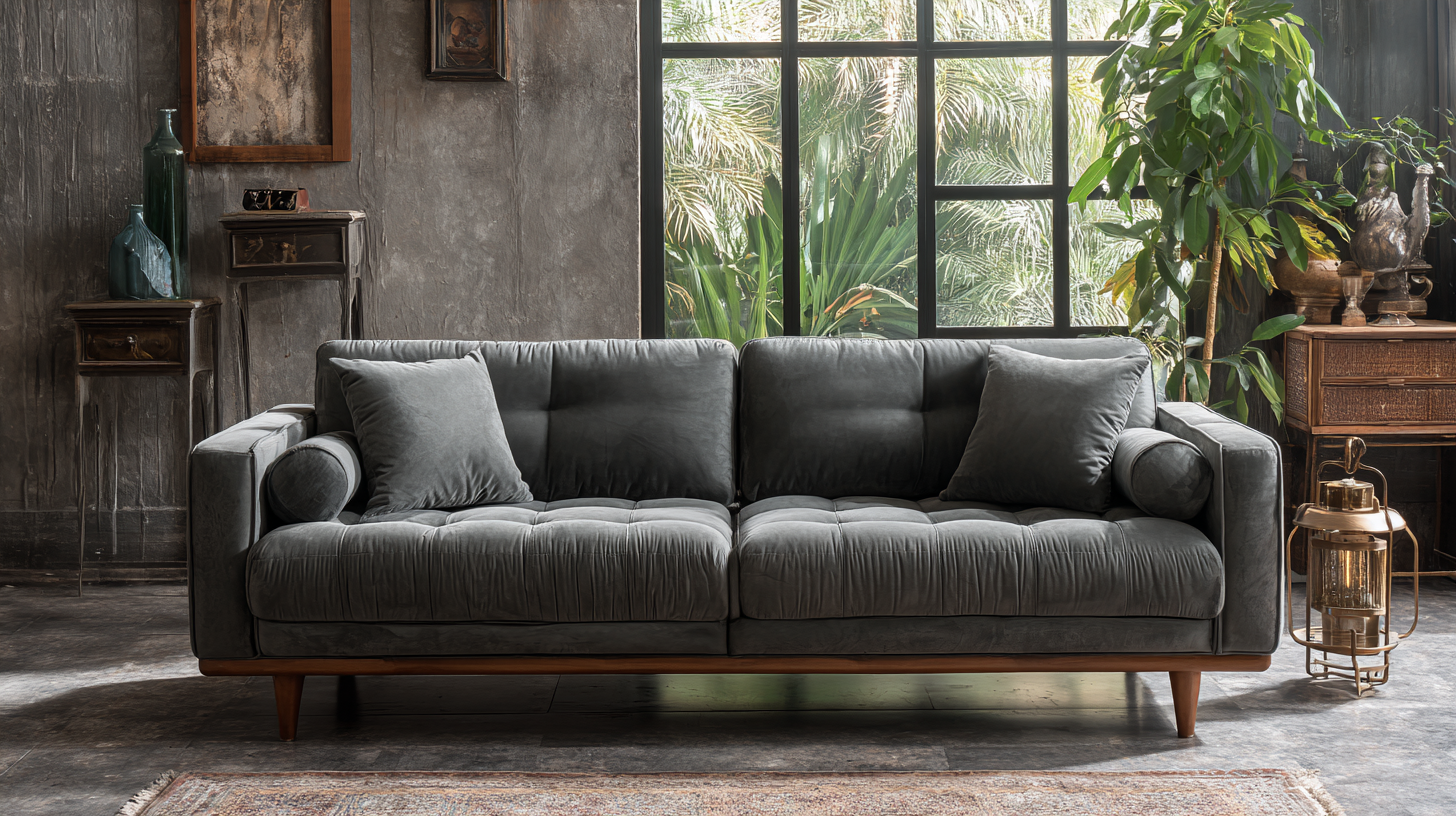As we delve into the evolving landscape of home furnishings, the Compressed Sofa emerges as a practical and stylish solution for modern living spaces. With the rise of urbanization and limited living areas, the demand for multifunctional and space-saving furniture has escalated significantly. According to a report by Technavio, the global sofa market is projected to grow by over 6% from 2023 to 2027, with compressed sofas leading the charge due to their ability to optimize space and enhance design flexibility. Furthermore, the incorporation of sustainable materials in compressed sofa production aligns with the growing consumer preference for eco-friendly products, presenting a win-win scenario for both manufacturers and environmentally conscious buyers. In this blog, we will explore the crucial factors to consider when selecting the best compressed sofa for your living space, ensuring both comfort and functionality.

Compressed sofas have gained immense popularity in recent years, primarily due to their space-saving design and versatility. Unlike traditional sofas, compressed sofas are designed to be lightweight and easy to move, making them an ideal choice for urban dwellers or anyone with limited living space. Their unique construction allows them to be delivered in compact packaging, which can be a huge advantage for those who want to avoid the hassle of maneuvering bulky items through narrow hallways or staircases.
These innovative sofas are not only practical but also stylish, available in a variety of designs, colors, and fabrics to suit any decor. Many manufacturers focus on eco-friendly materials in their production, appealing to environmentally-conscious consumers. The choice of compressed sofas allows homeowners to maximize their living areas without sacrificing comfort or aesthetics. Overall, the combination of functionality and aesthetic appeal is what makes compressed sofas a trendy option for modern living spaces.

Choosing the best compressed sofa for your living space involves several key factors that ensure both comfort and functionality. First and foremost, assess the available space in your room. Measure the dimensions carefully, considering factors like doorways and hallways that the sofa must pass through. A compressed sofa should fit snugly within your living area without overwhelming it, allowing for ease of movement and creating a harmonious look.
Another crucial factor is the sofa's material. Look for fabrics that suit your lifestyle; for example, if you have pets or small children, opt for durable, stain-resistant materials. Additionally, consider the style and color of the sofa. It should complement existing decor while reflecting your personal taste.
Tips: When testing the sofa, sit down and check the firmness of the cushions; your comfort is paramount. Also, explore adjustable features, like reclining mechanisms, which can enhance your lounging experience. Finally, always review customer feedback to evaluate the long-term durability and satisfaction levels of the sofa you’re considering.

When selecting a compressed sofa for your living space, sizing is crucial to ensure a perfect fit. Start by measuring the area where you intend to place the sofa. Take into account not only the length and depth of the available space but also any potential obstacles, such as doors, windows, or heating vents. A well-measured area allows you to visualize how different sofa sizes will impact the room's flow and aesthetics.
Once you have your measurements, consider the size of the sofa itself. Compressed sofas often come in various configurations, including sectional, loveseat, and traditional three-seaters. Think about how many people you typically entertain and the comfort level you desire. For smaller rooms, a compact model or a loveseat may work best, while larger spaces can accommodate sectional sofas that provide ample seating without overwhelming the area. Choosing the right size goes hand in hand with your room décor, ensuring that the sofa complements the overall style and does not make the space feel cramped.
| Sofa Type | Dimensions (L x W x H) | Recommended Room Size | Seating Capacity | Style |
|---|---|---|---|---|
| Compact Loveseat | 54" x 30" x 30" | Small Living Room (up to 150 sq ft) | 2-3 | Modern |
| Mid-Century Sofa | 72" x 32" x 32" | Medium Living Room (150-250 sq ft) | 3-4 | Mid-Century Modern |
| Sectional Sofa | 90" x 90" x 35" | Large Living Room (over 250 sq ft) | 5-7 | Contemporary |
| Sleeper Sofa | 80" x 34" x 34" | Medium Living Room (150-250 sq ft) | 2-3 | Versatile |
When selecting a compressed sofa for your living space, the importance of fabric choice cannot be overstated. According to a recent report by the Furniture Industry Association, approximately 60% of consumers prioritize durability in their upholstery materials, reflecting a growing demand for long-lasting solutions. Fabrics such as microfibers and synthetic blends are popular choices, as they resist stains and are easier to clean compared to traditional materials like cotton or wool. In fact, a study showed that microfiber sofas can withstand up to 10,000 double rubs, making them a robust option for family homes or high-traffic areas.
Comfort is equally crucial when choosing a sofa fabric. A survey conducted by HomeTextiles Today revealed that 75% of customers consider softness and comfort a key deciding factor. Fabrics like performance velvet and high-quality polyester not only offer a plush seating experience but are also designed to retain their texture over time. Moreover, advancements in fabric technology mean that many modern materials are engineered to enhance breathability and minimize heat retention, ensuring that lounging on your sofa remains a pleasurable experience year-round. Selecting the right fabric based on these insights can significantly enhance both the durability and comfort of your living space.
This chart illustrates the durability and comfort ratings of various fabric types commonly used in compressed sofas.
Maintaining your compressed sofa is essential to ensure its longevity and comfort. Firstly, regular cleaning is crucial. Vacuum the sofa regularly to remove dust and debris that can accumulate in the fibers. For deeper cleaning, use a mild detergent mixed with water and a soft cloth. Always test any cleaning solution on a small, inconspicuous area first to avoid damage. Remember to air out your sofa periodically to keep it fresh, especially if it’s made from synthetic materials that can trap odors.
In addition to cleaning, it's important to pay attention to the sofa’s structure. Check for any signs of wear, such as loose seams or fraying fabric. If you notice any issues, addressing them promptly can prevent further damage. Using fabric protectors can also help shield your sofa from stains and spills. Finally, consider rotating the cushions regularly to ensure even wear and maintain the sofa's shape. By following these maintenance tips, you can keep your compressed sofa looking and feeling its best for years to come.
